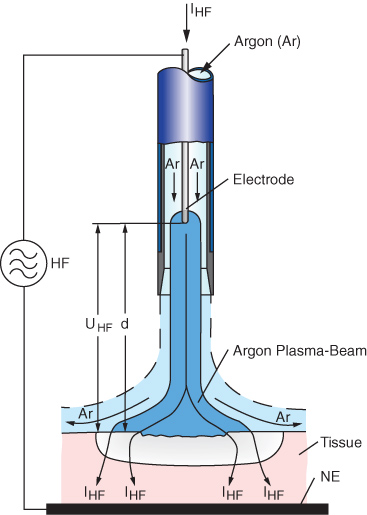[:en]
Overview of difference between hot plasma and cold plasma.
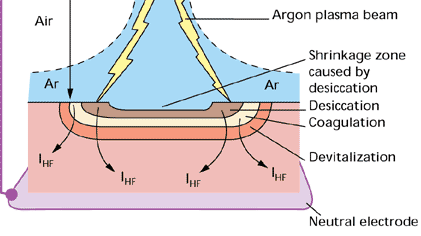
The desiccation or carbonisation layer is the layer of the skin which experiences the the local highest temperatures. Carbonisation also occurs when using “cold plasma”.
The definition of hot plasma or cold plasma is dependant on the temperature at the carbonisiation point. In aesthetic treatments and medicine, the carbonisation point is where the electrical arc meets the surface of the skin or the soft tissue dehydrating it quickly into carbon.
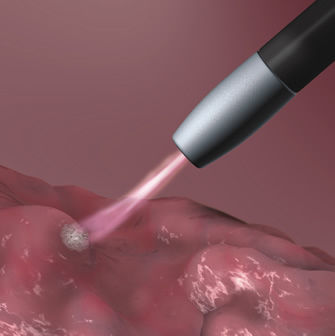
Cold plasma example, plasma in Argon. The arc is far more stable and looks almost like a flame. The temperature at the point of contact of the arc with the skin is not as high as it is in case of arcing in air because the energy associated with the arc is lower.
When the electrical arc strikes, the temperature at the carbonisation point is proportional to the energy associated with the arc. In turn, the energy associated with the electrical electrical arc is dependant on the dielectric strength of the medium used (normally ambient air). Generally the higher the dielectric strength the higher the energy required to create the electrical arc. In case of most plasma devices for aesthetic applications, the medium used is ambient air. As we know the air normally behaves as an insulator due to its inherent high dielectric strength. Air is generally behaving as an insulator and it takes a relatively high amount of energy to generate an electrical arc in air. This is because the energy required for the arc to take place in a high electric strength material is relatively high. This is why the energy associated to the electrical arc in air has generally high power.
Conversely the lower the dielectric strength the lower the energy associated to the arc. Therefore the energy required to strike the electrical arc is relatively low and hence the low energy allows lower temperatures at the carbonisation point. For this reason one of the most common ways to produce low energy arcs and consequently cold plasma is by using “carrier gasses” with relatively low dielectric strength.
Generally hot plasma is defined as such when electrical arc takes place in air. This is because the temperature of electrical arc in air (they associated to ddwklaw.com labor lawyer) at the carbonisation point is relatively high. So what is generated by over 90% of devices in the market is hot plasma, because the arc in air and the temperature of the arc is relatively high. When the temperature at he carbonisation point is reduced to a certain factor we refer to it as “cold plasma”. As we will see the reduction of the temperature at the carbonisation point is possible in various ways.
What is “hot plasma”?
“Hot plasma” is that electrical arc generated in atmospheric air. In other words “hot plasma” is electrical arcing which takes place in ambient air without the use of any carrier gasses. It is the same electrical spark you see generated by most devices in the market place. Also because air is made up mostly by nitrogen, some marketers refer to this type of electrical arc as “nitrogen plasma”.
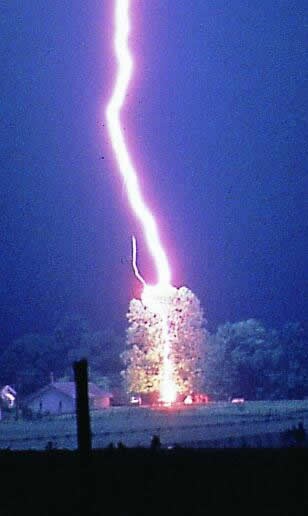
The temperatures of electrical arcing in air are extremely high. In case of lightening the temperature at the striking point is extremely high. It can set a tree on fire.
The temperature at the carbonisation point is very high (over 1000 degrees Centigrade). The high temperature is localised at the carbonisation point and this high temperature occur because the dielectric strength of air is relatively high, hence the air it usually behaves as an insulator. In order to generate an electrical arc in air a relatively high amount of energy is required. In other words, in to convert the air from an insulator to a conductor, which is the phenomenon of plasma or electrical arcing a relatively high amount of energy is required. Hence the electrical plasma in air carries a relatively high amount of energy relative to other types of plasma (like plasma in argon). Hence the energy associated to plasma in air is relatively high (high energy = high temperatures = high heat transfer).This is the type of plasma we find in most common plasma or electrical arcing devices for medical and aesthetic purposes.
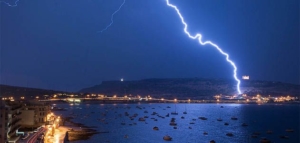
Lightening is an example of “hot plasma”. The energy and temperature at the striking point is so high that it can cause serious damage.
The high temperature at the carbonisation point makes the arc painful during aesthetic procedures (therefore the requirement for numbing products for the treatment). The heat propagated into the skin is relatively high. At low power intensity the arc is not very easy to sustain.
The amount of heat transferred into the dermal layer is relatively high compared to cold plasma.
To summarise “hot plasma” in aesthetic treatment is:
- More painful than “cold plasma”, this is because the temperature at the carbonisation point is relatively high.
- The heat transfer at the dermal layer is relatively high.
- The cross section of the carbonisation point is relatively small.
What are carrier gasses in Plasma?
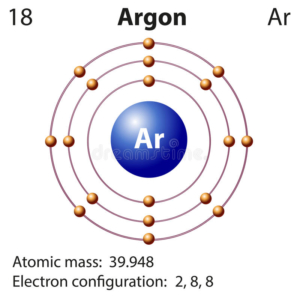 Carrier gasses are those gasses which have a dielectric strength lower than air. A lower dielectric strength means that the arc can take place more easily than in air. These gasses require less energy than air to become ionised (become a conductor). This means that the energy associated to the arc is lower, the temperature at the point of contact between the arc and the skin is also lower. These types of gasses are also inert, non flammable and non poisonous.
Carrier gasses are those gasses which have a dielectric strength lower than air. A lower dielectric strength means that the arc can take place more easily than in air. These gasses require less energy than air to become ionised (become a conductor). This means that the energy associated to the arc is lower, the temperature at the point of contact between the arc and the skin is also lower. These types of gasses are also inert, non flammable and non poisonous.
The most common carrier gasses used for this type of application is Argon. This is because:
- Argon is relatively inexpensive ,
- it has a low dielectric strength,
- inert,
- non flammable and
- non poisonous.
For the above reasons Argon has been used for several years in aesthetics and medicine. The advantage of using a carrier gas is that the plasma generated is much more stable, delivers less energy and so less pain than normal hot plasma. The arc in Argon is easier to sustain and the diameter of the surface contact between the arc and the skin is larger.
What is “cold plasma”?
As we know “hot plasma” is the electrical arcing in air. Air is normally an insulator (relatively high dielectric strength) therefore the energy required to generate the arc is relatively high. This causes high temperatures at the point of contact between the skin and the electric arc.
In order to stabilise the arc and facilitate the ionisation process (which is another way to refer to as “plasma”, electrical sparking etc), Argon or other inert gasses with lower dielectric strength than air are used. This is because lower dielectric strength means lower breakdown voltage and in turn this means that the electrical arc can be generated more easily. The term “cold” is used because, when an inert gas with far lower breakdown voltage than air is used, the temperature at the carbonisation point is much lower. Additionally the arc is much more stable and the diameter of the surface of contact between the arc and the skin is much larger than electrical arc in air (“hot plasma”). This makes the aesthetic treatment less painful and and also allows for some effects not possible with “hot plasma”.
In other words when we use certain carrier gasses with dielectric strength lower than air we have “cold plasma”, this is referred to as such because of the lower temperature at the carbonation point. This is because the energy associated with the electrical arc in Argon is much lower than of plasma in air. The temperature is lower because the carrier gasses (or external gasses) used have a lower “breakdown voltage” than air. Because of this, the energy required in order to generate the arc is much lower in this type of electrical arc. In turn since the energy is much lower also the temperature is lower than plasma in air. Hence plasma in Argon is usually referred to as “cold plasma”. The lower temperature and lower energy associated to the arc cause less heat transfer into the skin and therefore less pain associated to this type of electrical arc. Also the higher stability of the arc makes this type of electrical arc one of the preferred ways to carry out skin resurfacing using plasma.
The main application of “cold plasma” in aesthetics is skin resurfacing. This is because the stabilisation allows the user to control the arcing more easily making this type of aesthetic treatment:
- less painful than “hot plasma” (normal arcing in air).
- the diameter of the carbonisation point is larger than that of plasma in air.
[:es]Resumen de la diferencia entre plasma caliente y el plasma frío.

La capa de desecación o carbonización es la experimentación a la a piel a la más altas temperaturas locales. La carbonización también se produce cuando se utiliza “plasma frío”.
La definición de plasma caliente o plasma frío depende de la temperatura en el punto de la carbonización. En tratamientos estéticos y medicamentos, el punto de carbonización es donde el arco eléctrico se encuentra con la superficie de la piel o el tejido blando que deshidrata rápidamente en carbono.

Ejemplo de plasma frío, plasma en argón. El arco es mucho más estable y parece casi una llama. La temperatura en el punto de contacto del arco con la piel no es tan alta como en el caso de la formación de arco en el aire porque la energía asociada con el arco es menor.
Cuando el arco eléctrico incide, la temperatura en el punto de carbonización, es proporcional a la energía asociada con el arco. A su vez, la energía asociada con éste depende de la resistencia dieléctrica del medio utilizado (normalmente aire ambiente). En general, cuanto mayor es la resistencia dieléctrica, mayor es la energía requerida para crear el arco eléctrico. En el caso de la mayoría de los dispositivos de plasma para aplicaciones estéticas, el medio utilizado es el aire de ambiente. Como sabemos, el aire normalmente se comporta como un aislante debido a su alta resistencia dieléctrica inherente. El aire generalmente se comporta como un aislante y se necesita una cantidad relativamente alta de energía para generar un arco eléctrico en el mismo. Esto se debe a que la energía requerida para que el arco tenga lugar en un material de alta resistencia eléctrica es relativamente alta. Esta es la razón por la cual la energía asociada al arco eléctrico en el aire generalmente tiene una potencia alta.
A la inversa, cuanto menor sea la resistencia dieléctrica, menor será la energía asociada al arco. Por lo tanto, la energía requerida para golpear el arco eléctrico es relativamente baja y, por ende, la energía le permite a temperaturas más bajas en el punto de carbonización. Por esta razón, una de las formas más comunes de producir arcos de baja energía y, en consecuencia, de plasma frío es mediante el uso de “gases portadores” con una fuerza dieléctrica relativamente baja.
Generalmente, el plasma caliente se define como tal cuando el arco eléctrico tiene lugar en el aire. Esto se debe a que la temperatura del arco eléctrico está en el aire (la energía asociada al arco) en el punto de carbonización es relativamente alto. Lo que genera más del 90% de los dispositivos en el mercado es plasma caliente, debido a que el arco en el aire y la temperatura del arco es relativamente alto. Cuando la temperatura en el punto de carbonización se reduce a un cierto factor, nos referimos a él como “plasma frío”. Como veremos, la reducción de la temperatura en el punto de carbonización es posible de varias maneras.
¿Qué es el “plasma caliente”?
El “plasma caliente” es ese arco eléctrico generado en el aire atmosférico. En otras palabras, el “plasma caliente” es un arco eléctrico que tiene lugar en ambiente de aire sin el uso de gases portadores. Es la misma chispa eléctrica que se ve generada por la mayoría de los dispositivos en el mercado. Además, debido a que el aire está compuesto principalmente por nitrógeno, algunos especialistas en marketing se refieren a este tipo de arco eléctrico como “plasma de nitrógeno”.

Las temperaturas del arco eléctrico en el aire son extremadamente altas. En caso de aligeramiento, la temperatura en el punto de golpeo es extremadamente alta. Puede prender fuego a un árbol.
La temperatura en el punto de carbonización es muy alta (más de 1000 grados centígrados). La alta temperatura se localiza en el punto de carbonización y esta alta temperatura se produce porque la resistencia dieléctrica del aire es relativamente alta, el aire se comporta como un aislante. Para generar un arco eléctrico en el aire se requiere una cantidad relativamente alta de energía. En otras palabras, para convertir el aire de un aislante a un conductor, que es el fenómeno del plasma o del arco eléctrico, se requiere una cantidad relativamente alta de energía. El plasma eléctrico en el aire transporta una cantidad relativamente alta de energía en relación con otros tipos de plasma (como el plasma en argón). La energía asociada con el plasma en el aire es relativamente alta (alta energía = altas temperaturas = alta transferencia de calor). Este es el tipo de plasma que encontramos en la mayoría de los dispositivos de arco eléctrico o plasma comunes con fines médicos y estéticos.

El aligeramiento es un ejemplo de “plasma caliente”. La energía y la temperatura en el punto de golpeo son tan altas que pueden causar daños graves.
La alta temperatura en el punto de carbonización hace que el arco sea doloroso durante los procedimientos estéticos (El requisito de adormecer los productos para el tratamiento). El calor propagado en la piel es relativamente alto. A baja intensidad de potencia, el arco no es muy fácil de sostener.
La cantidad de calor transferido a la capa dérmica es relativamente alta en comparación con el plasma frío.
Resumir el “plasma caliente” en el tratamiento estético es:
- Más doloroso que el “plasma frío”, esto se debe a que la temperatura en el punto de carbonización es relativamente alta.
- La transferencia de calor en la capa dérmica es relativamente alta.
- La sección transversal del punto de carbonización es relativamente pequeña.
¿Qué son los gases portadores en plasma?
 Los gases portadores son aquellos que tienen una resistencia dieléctrica más baja que el aire. Una menor fuerza dieléctrica significa que el arco puede ocurrir más fácilmente que en el aire. Estos gases requieren menos energía que el aire para ionizarse (convertirse en un conductor). Esto significa que la energía asociada al arco es menor, la temperatura en el punto de contacto entre el arco y la piel también es menor. Estos tipos de gases también son inertes, no inflamables, no venenosos.
Los gases portadores son aquellos que tienen una resistencia dieléctrica más baja que el aire. Una menor fuerza dieléctrica significa que el arco puede ocurrir más fácilmente que en el aire. Estos gases requieren menos energía que el aire para ionizarse (convertirse en un conductor). Esto significa que la energía asociada al arco es menor, la temperatura en el punto de contacto entre el arco y la piel también es menor. Estos tipos de gases también son inertes, no inflamables, no venenosos.
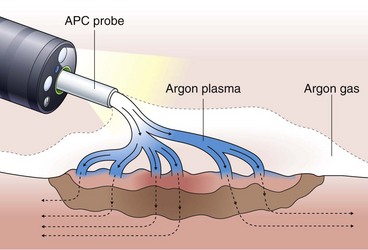
El argón tiene un voltaje de ruptura mucho más bajo que el aire. Consulte este enlace para obtener más información.
Los gases portadores más comunes utilizados para este tipo de aplicación son el argón. Esto es porque:
- El argón es relativamente barato,
- Tiene una baja resistencia dieléctrica,
- Inerte,
- No inflamable y
- No venenoso.
Por las razones anteriores, el argón se ha utilizado durante varios años en estética y medicina. La ventaja de usar un gas portador es que el plasma generado es mucho más estable, entrega menos energía y, por lo tanto, menos dolor que el plasma caliente normal. El arco en Argón es más fácil de sostener y el diámetro del contacto de la superficie entre el arco y la piel es mayor.
¿Qué es el “plasma frío”?
Como sabemos, el “plasma caliente” es el arco eléctrico en el aire. Normalmente, el aire es un aislante (resistencia dieléctrica relativamente alta), por lo tanto, la energía requerida para generar el arco es relativamente alta. Esto causa altas temperaturas en el punto de contacto entre la piel y el arco eléctrico.
Para estabilizar el arco y facilitar el proceso de ionización (Otra forma de referirse como “plasma”, chispas eléctricas, etc.), se utilizan argón u otros gases inertes con una menor resistencia dieléctrica que el aire. Esto se debe a que una menor fuerza dieléctrica significa un menor voltaje de ruptura y, a su vez, esto significa que el arco eléctrico se puede generar más fácilmente. El término “frío” se usa porque, cuando se usa un gas inerte con un voltaje de ruptura mucho más bajo que el aire normal, la temperatura en el punto de carbonización es mucho más baja. Además, el arco es mucho más estable y el diámetro de la superficie de contacto entre el arco y la piel es mucho más grande que el arco eléctrico en el aire (“plasma caliente”). Esto hace que el tratamiento estético sea menos doloroso y también permite algunos efectos no posibles con el “plasma caliente”.
En otras palabras, cuando usamos ciertos gases portadores con una resistencia dieléctrica más baja que el aire, tenemos “plasma frío”, esto se conoce como tal, debido a la menor temperatura en el punto de carbonatación. Esto se debe a que la energía asociada con el arco eléctrico en Argon es mucho menor que la del plasma en el aire. La temperatura es más baja porque los gases portadores (o gases externos) utilizados tienen un “voltaje de ruptura” más bajo que el aire. Debido a esto, la energía requerida para generar el arco es mucho menor en este tipo de arco eléctrico. A su vez, dado que la energía es mucho más baja, también la temperatura es más baja que el plasma en el aire. Por lo tanto, el plasma en argón se suele denominar “plasma frío”. La menor temperatura y la menor energía asociada al arco causan menos transferencia de calor a la piel y menos dolor asociado con este tipo de arco eléctrico. Además, la mayor estabilidad del arco hace que este tipo de arco eléctrico sea una de las formas preferidas para realizar el rejuvenecimiento de la piel usando plasma.
La principal aplicación del “plasma frío” en estética es el rejuvenecimiento de la piel. Esto se debe a que la estabilización permite al usuario controlar el arco más fácilmente para hacer este tipo de tratamiento estético:
- Menos doloroso que el “plasma caliente” (arco normal en el aire).
- El diámetro del punto de carbonización es mayor que el del plasma en el aire.
[:]

